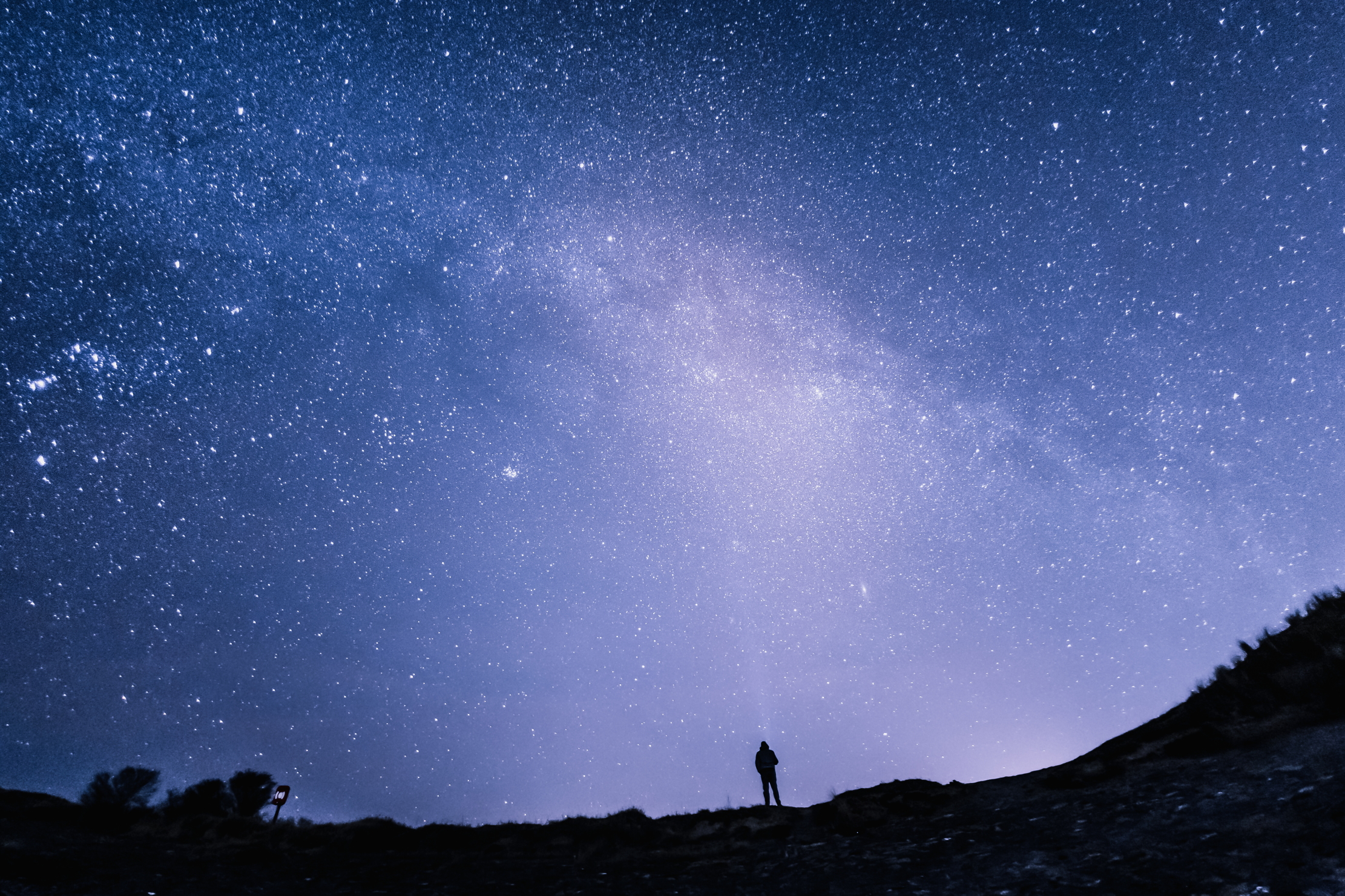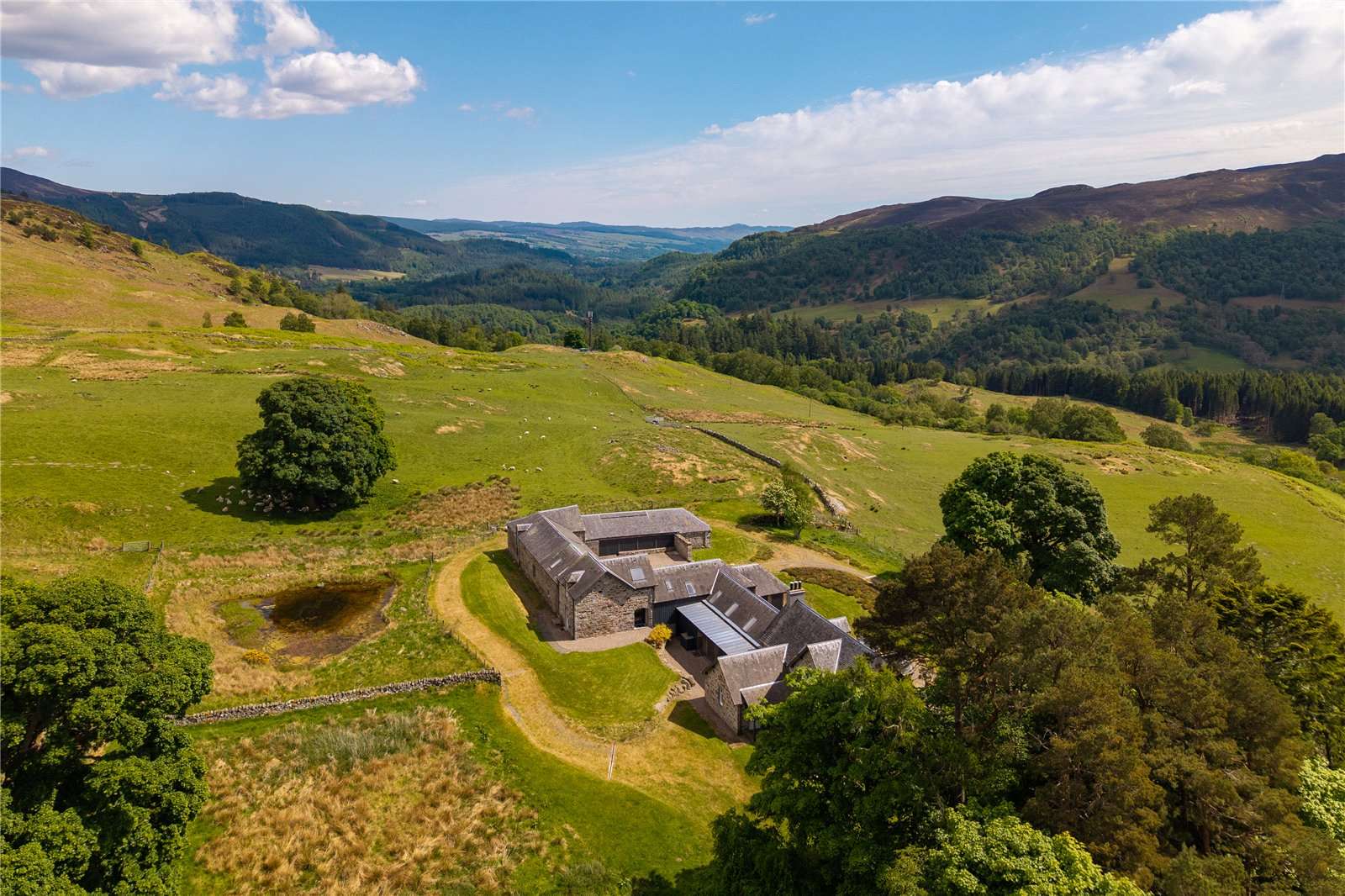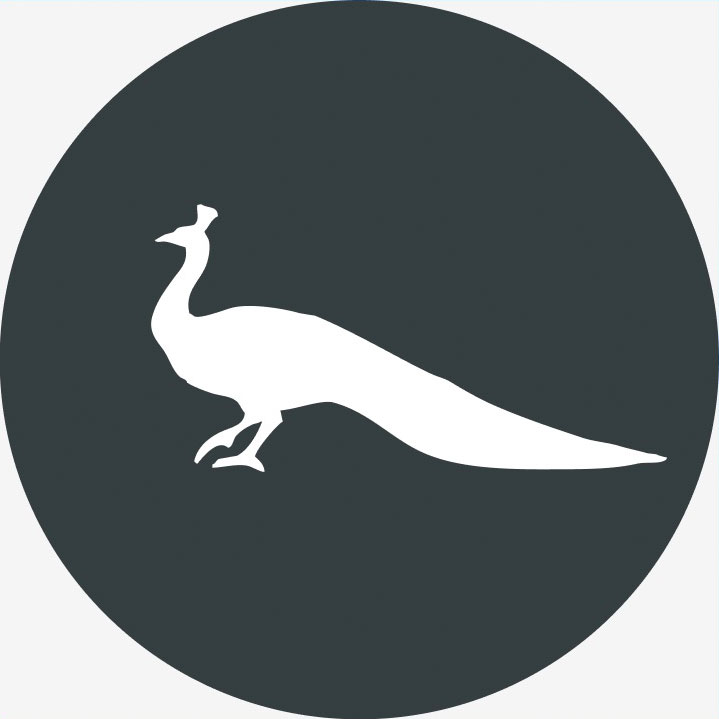'I’ve come here this evening to experience darkness. I’ve been craving it, the richness and peace of it, the way you crave silence when you’ve had too much noise'
Connected to a vastness that’s beyond comprehension, the night sky has inspired both artistic and scientific visionaries since the dawn of time, says Anna Levin.


I step into the woods, my dog by my side, leaving the streetlights behind me. Even in winter, the canopy gives a sense of enclosure — of entering a separate space, darker and wilder. My fingers trace the shape of my phone in my coat pocket as if for reassurance — its torch would be light enough if I wanted it. I resist the temptation to turn it on. I’ve come here this evening to experience darkness. I’ve been craving it, the richness and peace of it, the way you crave silence when you’ve had too much noise.
I walk slowly, my feet reaching out and feeling the way. I breathe in the evening and the first hint of night. I know my eyes will adjust given time. The first thing I notice is that the sounds are sharper and scents stronger, as if the other senses awaken and spring into action as sight falters. There’s a precision in the texture of the cool air on my face, a keen smell of earthy woodland. The wind is rustling the last of the leaves in the trees and the branches seem to creak and sigh, spooking me slightly. A crackle of twigs — is that squirrels overhead? I assume so by the way the dog quivers and starts, with a tug on the lead. She’s alive to the thrill of this unexpected adventure — scent and sound are what woodlands are all about to her, anyway.
I stroke her ears in agreement: yes, the smells are good out here tonight. I’m glad of her warmth and company to share the darkness. She’s free from the cultural associations of nighttime woods with evil — the scenes of scary films and the warnings of fairy tales. She’s never heard Macbeth describe how the ‘light thickens and the crow makes wing to the rooky wood’, nor talk of ‘night’s black agents’. Instead, the darkness is vibrant and full of possibilities. Perhaps roe deer are picking their delicate way along the path that weaves through the trees or foxes are emerging from the tangle of undergrowth where small creatures scurry.
I tug my coat down so that it’s long enough to sit on and settle between outstretched tree roots, resting my head against the trunk. The dog curls into me. High above us, the silhouettes of branches splinter into the last hint of light in the sky. I can just make them out, a mesh of black cracks like raku pottery against the deepening blue. Tiny stars appear like decorations among the branches — here a cluster of faint pinpricks, there a clearer, brighter light. As I look, more and more stars appear, as if strung between the trees.
We uncurl ourselves and walk towards a clearing. I realise I’m walking more confidently now and I can see more, although the light has faded. I can discern the bulk of the tree trunks and the leafy path between them. The clearing holds a lake of sky above it, framed with branches, sprinkled and strewn with stars. I greet a few familiar constellations and trace other shapes myself, joining the dots and letting patterns be revealed.
'In our rush to celebrate technology and modernity with artificial light at night, we’ve been slow to realise what we’ve lost or to count the cost'
I feel myself sigh as something in me relaxes deeply, with a sense of calm and uplift all at once. Looking up at the night sky so often evokes a sense of wonder. The ‘twinkle twinkle’ of a little star makes us wonder not only ‘what you are’, but what we are, why we are here and what it’s all about. The hugeness of it all — the mind-boggling expanse of space and time. How do our tiny lives spinning on this turning planet fit into that vast celestial clockwork? Looking up makes me feel small in a humble way and yet bigger — exalted, even — connected to a vastness that’s beyond comprehension.
No wonder people have looked up at the night sky since the dawn of humanity and sought to answer the questions it poses. Myths and legends from every culture explain the stars, moon and celestial activity and explore the connections to our lives on Earth. With stories, art and music, we humans depict, describe and serenade the heavens. We respond to the sky with science, seeking to understand, map and measure the space beyond our planet. Astronomy is considered to be the oldest science, as ancient cultures around the world carried out meticulous observations on the skies and developed methods of noting their findings, from carved tablets to stone circles. Once upon a time, the sky was how we kept track of time itself and the changing constellations heralded the turning of the seasons.
Exquisite houses, the beauty of Nature, and how to get the most from your life, straight to your inbox.
Today, we are losing the night sky to ever increasing levels of artificial light. Over the past century and especially in the past few decades, the night has become brighter and brighter, to the extent that most of humanity now lives under light-polluted skies. Children are growing up without seeing the stars and many people in urban areas have never seen the Milky Way. In our rush to celebrate technology and modernity with artificial light at night, we’ve been slow to realise what we’ve lost or to count the cost. It turns out that we need the night — the lack of darkness is taking its toll on human health and wellbeing, as well as the wider natural environment. Without dark nights, we disrupt the clock that still sets time for all of life. We’re losing something more — that precious sense of wonder.
I flinch as I leave the woods and return to the brightness of the human world. The external lights around the houses seem garish, the street lights harsh and the headlights are dazzling as cars pass by. Back home, far too many lights are on indoors and my family are all glued to the blue hue of their screens. I check my emails and settle into inevitable before-bed chores — but, as I fall asleep, I remember the scent of the woodland night air and the sight of the stars shining through the trees.
Anna Levin is an author, journalist and editor with a special interest in people's connections to the natural world. Her latest book, Dark Skies, is out now
Country Life is unlike any other magazine: the only glossy weekly on the newsstand and the only magazine that has been guest-edited by His Majesty The King not once, but twice. It is a celebration of modern rural life and all its diverse joys and pleasures — that was first published in Queen Victoria's Diamond Jubilee year. Our eclectic mixture of witty and informative content — from the most up-to-date property news and commentary and a coveted glimpse inside some of the UK's best houses and gardens, to gardening, the arts and interior design, written by experts in their field — still cannot be found in print or online, anywhere else.
-
 'F1 on water': SailGP makes a splash in Portsmouth
'F1 on water': SailGP makes a splash in PortsmouthSix years after it was founded, SailGP has got the wind behind its sails. What makes this sport, dubbed 'F1 on water', so compelling?
-
 Six homes with breathtaking locations, from West Sussex to the Highlands, as seen in Country Life
Six homes with breathtaking locations, from West Sussex to the Highlands, as seen in Country LifeOur pick of some of the best homes to come to the market via Country Life this week includes a thatched home in Suffolk and two magnificent Scottish homes.
